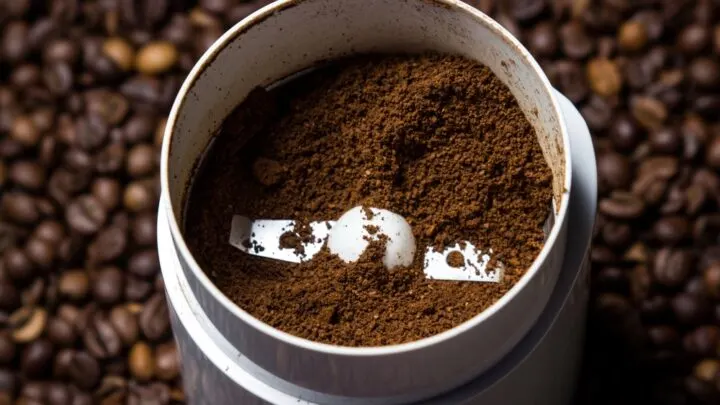Table of Contents
Do you like a strong cup of coffee in the morning? Or do you prefer something a little weaker? Regardless of your preference, we all want to know how to make the perfect cup of coffee. And that starts with figuring out how many coffee beans per cup to use.
Coffee is one of those things that is so simple, yet so complex. After all, all you need to make a cup of coffee is water and beans. But as anyone who has ever made a cup of coffee knows, the perfect cup of coffee is more than just water and beans.
It’s a delicate balance of many different factors, including the type of bean, the grind size, the brewing method, and your personal taste.
And while there is no one-size-fits-all answer to the question of how many coffee beans per cup, there are some general guidelines you can follow to brew a great cup of coffee that suits your individual taste.
So, how many coffee beans should you use per cup of coffee? Read on to find out.
What is the Perfect Ratio of Coffee Beans to Water for a Great Cup of Coffee?
Everyone loves a great cup of coffee and there’s no denying that it’s one of life’s simple pleasures, but brewing the perfect cup can be tricky.
One of the most important factors is the ratio of coffee beans to water. Too few beans and the coffee will be weak and watery. Too many beans and it will be bitter and unpalatable.
So, what is the perfect ratio? Unfortunately, there is no one-size-fits-all answer to this question. The perfect ratio of coffee beans to water depends on a number of factors, including the type of bean, the grind size, the brewing method, and your personal taste.
That said, a good starting point is about two tablespoons of ground coffee beans per 6-8 ounces of water. The average amount of coffee beans you would use to get two tablespoons of ground coffee is about 10.6g or, if you don’t have a kitchen scale, somewhere around 80 beans.
That will be enough to brew a robust and full-bodied cup of coffee without it tasting too watery or bitter. From there, you can experiment with different ratios to find the perfect cup of coffee for your taste buds.
And once you do, enjoy your delicious cup of java!
How can You Make Sure You’re Using the Right Amount of Coffee Beans Per Cup for Your Brew Method?
Getting the perfect cup of coffee is a real science. Just ask any barista and they’ll tell you that there are a million different factors that go into making a great cup of coffee. But one of the most important factors is using the right amount of coffee beans.
Depending on your brew method, the amount of coffee beans you use will vary. For example, if you’re using a drip coffee maker, you’ll want to use about 2 tablespoons of ground coffee beans for every 6 ounces of water.

If you’re using a French press, you’ll want to use about 1 tablespoon of ground coffee for every 4 ounces of water.
And if you’re using an espresso machine, you’ll want to use about 1/2 ounce of coffee for every 2 ounces of water.
So, how can you make sure you’re using the right amount of coffee beans? The best way is to consult your brewer’s manual or ask a barista for advice. They’ll be able to help you figure out the perfect ratio of coffee beans to water for your specific brewing method.
Is There a Difference Between Fresh Ground Whole Bean and Pre-Ground Coffee When it Comes to Ratios?
Is there really a difference between fresh ground whole bean coffee and pre-ground coffee when it comes to ratios? I mean, aren’t they both just grounds?
Well, actually, there is a big difference.
The Grind Size

The thing is, with whole beans, you have more control over the grind. And the grind is important when it comes to coffee because it directly affects the ratio of coffee to water.
A finer grind will have more surface area exposed to water, resulting in a stronger cup of coffee. Conversely, a coarser grind will have less surface area exposed to water, resulting in a weaker cup of coffee.
With pre-ground coffee it’s much harder to control the grind size. You get what you get. As a result, it can be difficult to get the perfect ratio of coffee to water.
So, if you’re looking for the perfect ratio of coffee to water, it’s best to start with fresh ground whole beans. That way, you can experiment with different grind sizes until you find one that suits your taste.
What if You Like Your Coffee Strong or Weak – Can You Adjust How Many Coffee Beans Per Cup Accordingly?
Coffee is a complex beverage, and the perfect cup requires careful consideration of many factors – from the quality of the beans to the grind size to the water temperature. One important factor that is often overlooked is the bean-to-water ratio.
This refers to the amount of coffee beans used in relation to the amount of water used. The standard ratio is about 1:16 – that is, for every one gram of coffee, you use 16 grams of water.
However, this ratio can be adjusted depending on your personal preferences. If you like your coffee strong, you can increase the bean-to-water ratio. Conversely, if you like your coffee weak, you can decrease the bean-to-water ratio.
Keep in mind, however, that these adjustments will affect other aspects of the coffee – such as the brewing time and the caffeine content. So experiment a bit and find the perfect ratio for your perfect cup of coffee.
How Long Do Coffee Beans Last?
How long do coffee beans last? It depends on how you look at it. If you’re talking about how long they’ll stay fresh, then the answer is anywhere from a few days to a few weeks.
But if you’re asking how long do coffee beans last after being roasted, then the answer is a little bit longer – around 2-3 weeks. And if you’re wondering how long do coffee beans last when unroasted, well, that’s a whole other can of beans. (Pun definitely intended.) Seriously though, unroasted coffee beans will last for months, even years.
Some other factors to consider are;
Type of Bean
How long do coffee beans last also depends on the type of bean. For example, Arabica beans are more delicate than Robusta beans and will therefore go bad more quickly.
How are They Stored
if you want your coffee beans to last longer, then storage is very important. If you store your beans in a cool, dark place, they’ll last longer than if you store them in a warm, humid environment.
Type of Roast
Finally, it also depends on how the beans are roasted. Lightly roasted beans will last longer than dark roasted beans because they haven’t been exposed to as much oxygen.
So there you have it – the answer to the question of how long do coffee beans last.
How Do I Store My Coffee Beans so They Stay Fresh for as Long as Possible?
Don’t you just hate it when you go to make a pot of coffee and your beans are stale? Or even worse, when you buy a bag of beans only to find out that they’ve already gone bad? It’s the worst. But never fear!
There are a few simple steps you can take to ensure that your coffee beans stay fresh for as long as possible.
Buy Whole Beans
First, always buy whole beans rather than pre-ground coffee. Coffee beans start going stale as soon as they’re ground, so it’s best to wait until right before you’re ready to brew to grind them up.
Airtight Container
Second, keep your beans in an airtight container – a zip-top bag or a jar with a tight-fitting lid will do the trick. This will prevent oxygen from exposure and help to keep the beans from drying out.
Where to Store Your Beans
Third, store your beans in a cool, dark place – like the pantry or cupboard. Heat and light can both cause coffee beans to lose their flavor, so storing them in a dark cupboard or pantry is ideal.
Freeze the Beans
Finally, according to Consumer Reports, if you’re not going to use all of your beans within a week or two, consider freezing them in small portions in airtight zipper freezer bags.
By following these simple tips, you can enjoy fresh, delicious coffee every time. Cheers!
Final Thoughts
So now you know the answer to the question – what is the perfect ratio of coffee beans to water for a great cup of coffee? But, before you go off and start brewing up a pot, I want to leave you with one final thought.
Just like with anything else in life, finding your perfect ratio may take some trial and error. But now you at least have a place to start. Don’t be afraid to experiment until you find what works best for you.
So what’s your perfect ratio? Let me know in the comments below. And be sure to check out our other posts for more tips on how to make the best coffee possible.
Thanks for reading! Happy Sipping!

